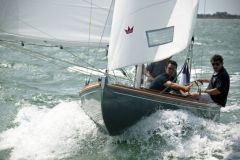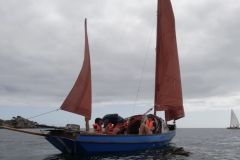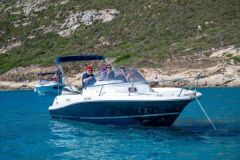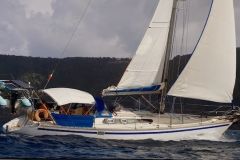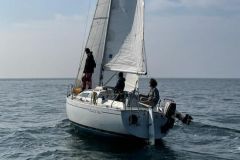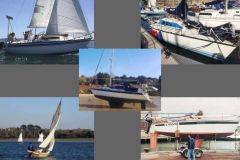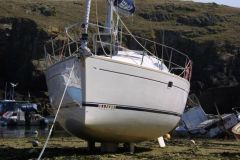- Price: from 5,000 euros
- Built 248 units from 1988 to 1993
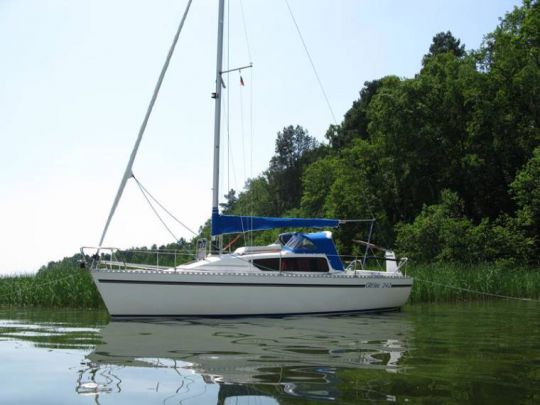
Launched in 1988, the Gib'Sea 242 is one of those five-legged sheep that seek to offer a maximum while remaining transportable. One thinks, of course, of the Edel 4 the Kelt 707 and of course at the Tonic 23 and other First 24 . The main attraction of the 242 is its integral dinghy configuration: the draft is limited to 0.40 cm with the rudder and daggerboard up and the boat runs aground perfectly flat on her cast iron wafer. This model has also been distributed as a keelboat, but in a more confidential manner.
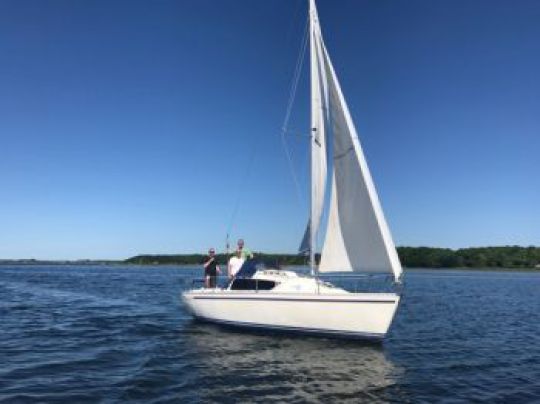
Cruiser rather than a lightning bolt of war
On paper, the 242 could work fast and well given the quality of its profiles and the slenderness of its rigging. On the water, most of the models show a mixed performance... Why? Hull surface condition, poor sails, overloading and especially engine drag in pits are the most common causes. Some 242 have also opted for a sealed well and a chair-mounted outboard. This sailboat, in the breeze, is not a model of stiffness to the canvas. Note that the keelboat version shows a more convincing behaviour under sail.

Successful deck plan
It's not easy to reconcile an imposing deckhouse with passageways and a front beach that can be frequented, but the 242 manages to do so. The same goes for the cockpit, which adopts a teak bridge to stow the WC and aft berth underneath. The deck fittings are sufficient for the programme. We appreciate the factioned rigging, which distributes the sail area of the mainsail and genoa evenly.
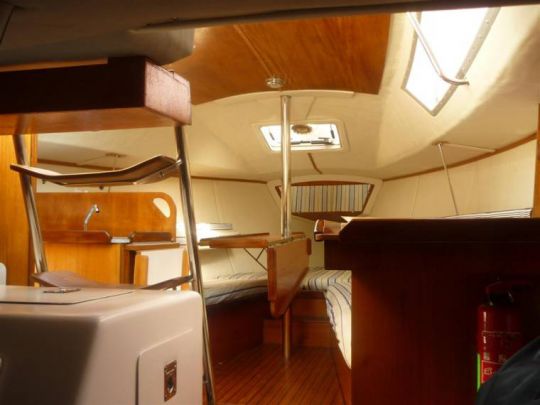
Toilets that close but not the cabins
The yard managed, at the price of a fairly high deckhouse, to offer 1.80 m of height under the hood. In order to make the most of the volume offered, the two double berths - one at the bow, the other under the cockpit are open to the saloon. The latter consists of a forward table, a short bench seat on the port side and a longer one on the starboard side, which can be used as an extra berth. Close to the companionway: the closed WC, an L-shaped galley and a chart table in the direction of travel.
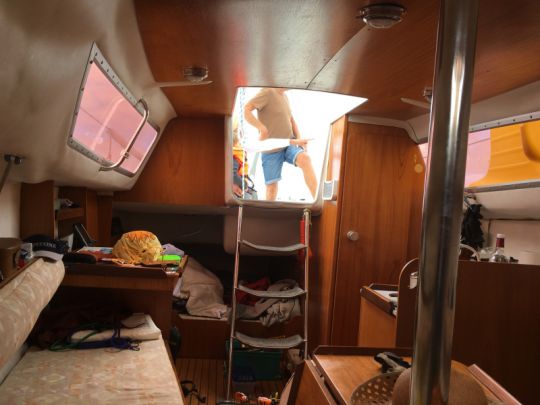
The diagnosis of Bateaux.com
On paper, 242 is transportable. However, its light displacement of 1,750 kg will, with the equipment and trailer, result in a coupling weight of well over two tonnes. It is not easy to get out and put back in the water... Its rather robust construction guarantees a good general ageing. The problems encountered are most often concentrated on the daggerboard, its mechanism and the ballast. The cast iron used, due to the lack of a blank stripping and epoxy treatment, will readily rust to a surface state contrary to a good glide, or even blockage of the appendage. For the rest, watch the elements subject to wear and tear - rigging, engine, sails, ropes, electrical circuit, plumbing...
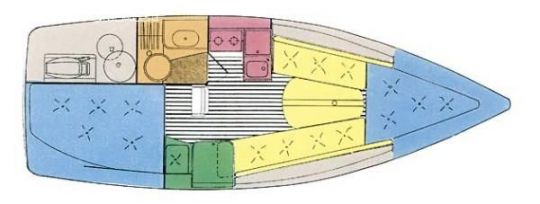
The advantages
- Robust sailing boat
- Possibility of road transport
- Interior volume
Disadvantages
- Difficult to maintain hull in dinghy version
- Engine drag in a well
- Average performance

But what is he missing?
A more accomplished motorization and a real rear skirt.
The equivalent today?
The Maxus 24 and the TES 246 Versus the new models have exactly the same programme: volume, closed WCs, two cabins, height under barrots... And are limited to 2.55 m wide in order to respect the road gauge - now increased to 2.55 m.





